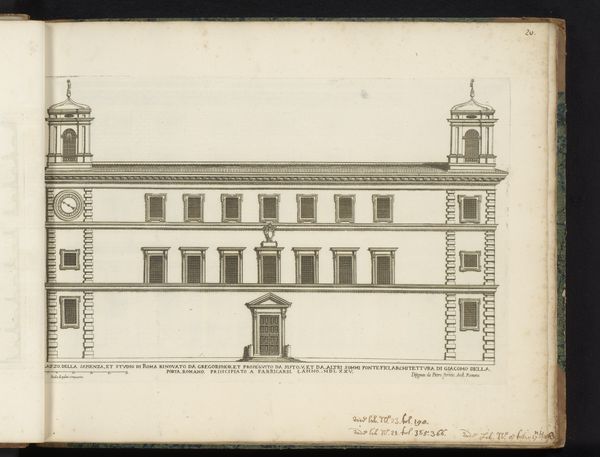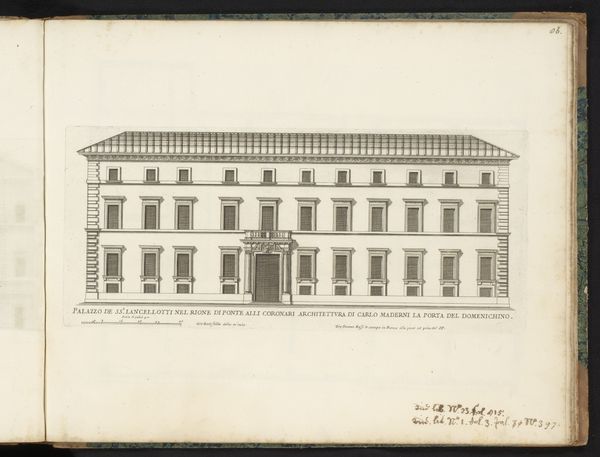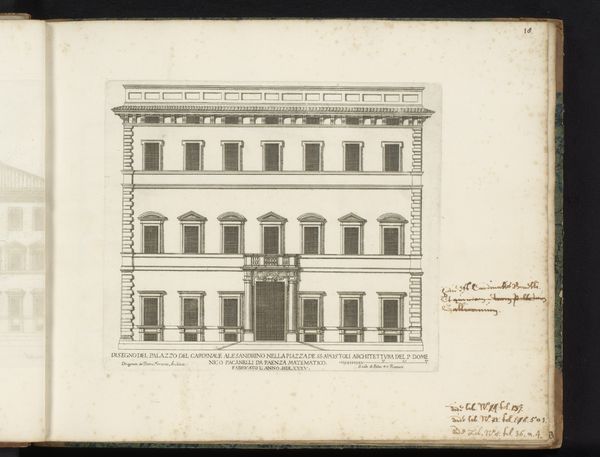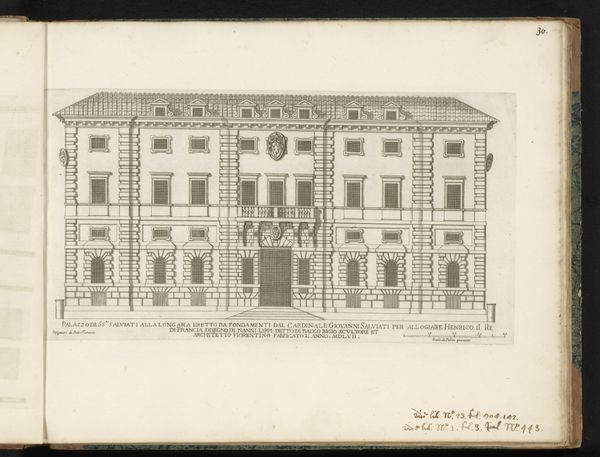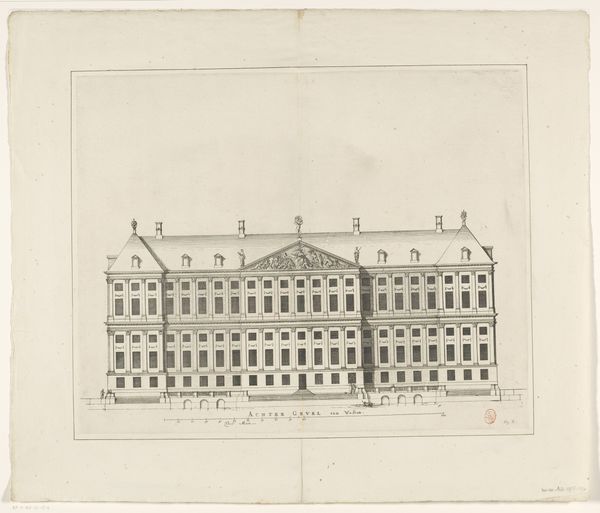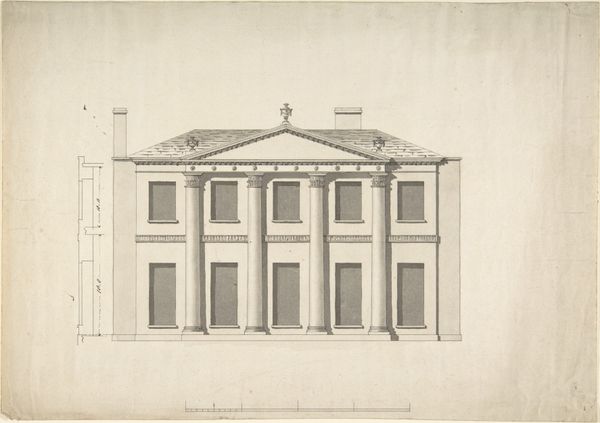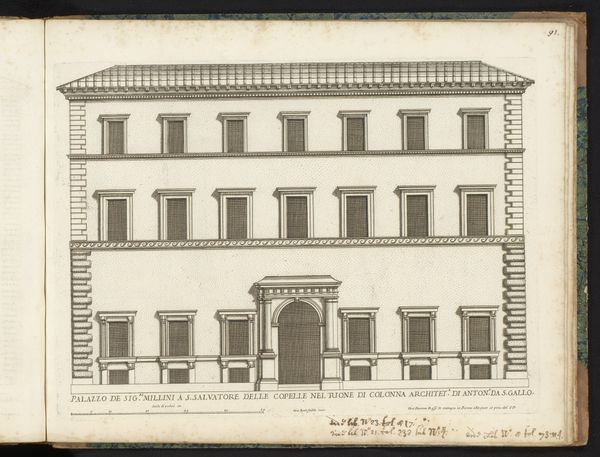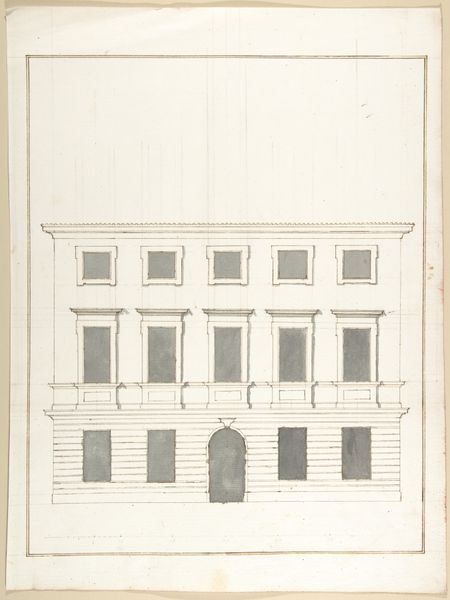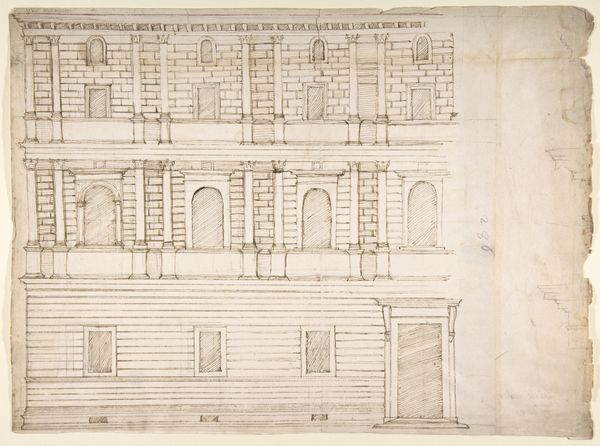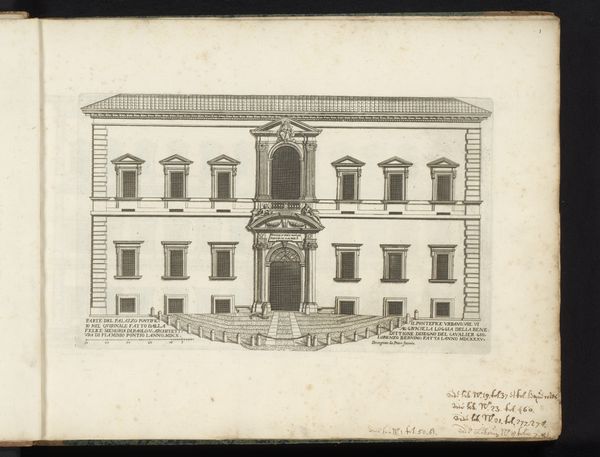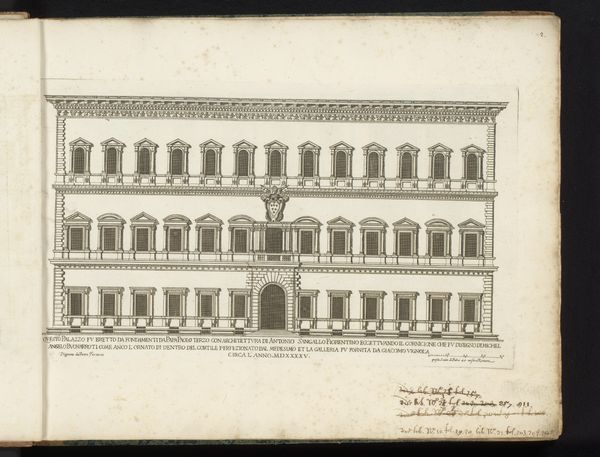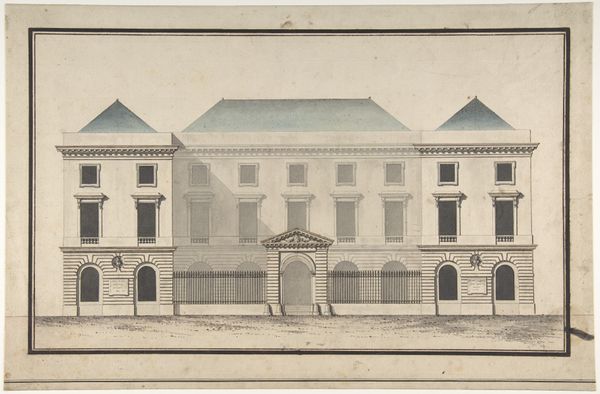
Elevation for the Court Front of the Hotel de Duval Dumanoir on Blvd. Montmartre, Paris 1780 - 1823
0:00
0:00
drawing, print, architecture
#
drawing
#
neoclacissism
# print
#
architecture
Dimensions: 11 x 15 11/16 in. (27.9 x 39.8 cm)
Copyright: Public Domain
Curator: The symmetry! I’m immediately drawn to the ordered, almost regimented facade of this building. Editor: Precisely. This is "Elevation for the Court Front of the Hotel de Duval Dumanoir on Blvd. Montmartre, Paris," a drawing by Pierre-Jean-Baptiste Chaussard, created sometime between 1780 and 1823. Currently, it resides here at the Metropolitan Museum of Art. Curator: The materials – drawing and print – lend a precise, almost technical feel, appropriate for an architectural rendering. Observe the unwavering horizontals and verticals. It's a powerful statement of neoclassicism, wouldn't you agree? Editor: Without a doubt. We're seeing the burgeoning influence of Neoclassicism. The social upheaval following the French Revolution lead to interest in a sense of order reflected through architectural design. It sought to legitimize the post-revolutionary social order by drawing explicit links to an ideal past. Curator: The even distribution of windows, each mirroring its counterpart on the opposite side, speaks to that. Notice also the restrained ornamentation, confined primarily to the door frames and the balcony. The building’s surface becomes a canvas for articulating rational principles, reflecting an idealization of civic virtue. Editor: Consider the Boulevard Montmartre during this era. This hotel would not exist in isolation but become part of a new visual landscape of power that had civic aims. Architecture had an imperative to guide public behavior via creating an environment of order. Curator: Intriguing. And let's return to that point about materials. The crisp lines achieved through the printmaking process enhance the sense of clarity and precision. This elevates a purely functional depiction towards something ideologically weighted with associations with law, logic, and the state. Editor: Yes, indeed. So much is happening on the surface here when, actually, that is very much the point, is it not? A blank facade upon which political ideologies could find material form. Curator: It all coalesces into a compelling commentary on architectural design during the Neoclassical era. Editor: Absolutely, a visual snapshot of how architecture intertwined with shifting political and cultural values of the late 18th and early 19th centuries in France.
Comments
No comments
Be the first to comment and join the conversation on the ultimate creative platform.

